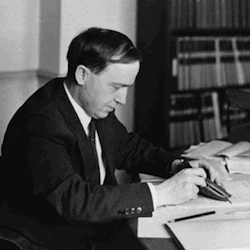"Great Debate" Resolved

Image credit: National Institute of Standards and Technology
Photo of Heber Curtis from the Bureau of Standards 1918 personnel photographic collection.
Dr. Hubble's discovery settles the "Great Debate" over the size of our own Milky Way galaxy. It also settles the distance to spiral nebulae and what they are.
Held on April 26, 1920 at the National Academy of Sciences in Washington, D.C., the debate focused on the opposing views of astronomers Harlow Shapley and Heber D. Curtis.
Shapley's studies led him to describe the Milky Way as an enormous galaxy of stars some 300,000 light years across. This is much larger than most previous estimates. He also said the solar system is far from the galaxy's center and that all nebulae, including spiral nebulae, are located within the Milky Way.
Using photographs he had taken as evidence, Dr. Curtis presented his idea that spiral nebulae were "island universes", or distant star systems similar to the Milky Way. They were not a part of the Milky Way galaxy. He also believed the Milky Way was less than 30,000 light years in diameter and 8,000 light years in thickness.

Image credit: AIP Emilio Segre Visual Archives, Shapley Collection
Photo of Harlow Shapley in his office at Harvard circa 1935.
Dr. Hubble's recent observations support Curtis' views. While bright, diffuse nebulae are relatively close and part of the Milky Way, spiral nebulae are separate systems located far away from it. He estimates the spiral Andromeda Nebula is as large and holds as much matter as the Milky Way. However, Hubble's findings also support Shapley's ideas about the Milky Way's size and the location of the solar system.
Shapley's work had increased the size of the Universe by about ten times, but Hubble's recent discoveries have multiplied it by at least another ten. Shapley observed a historical progression, from belief in a small universe with man at its center, to a larger one with Earth further from the center: "The significance of man and the Earth…has dwindled with advancing knowledge of the physical world…" •



